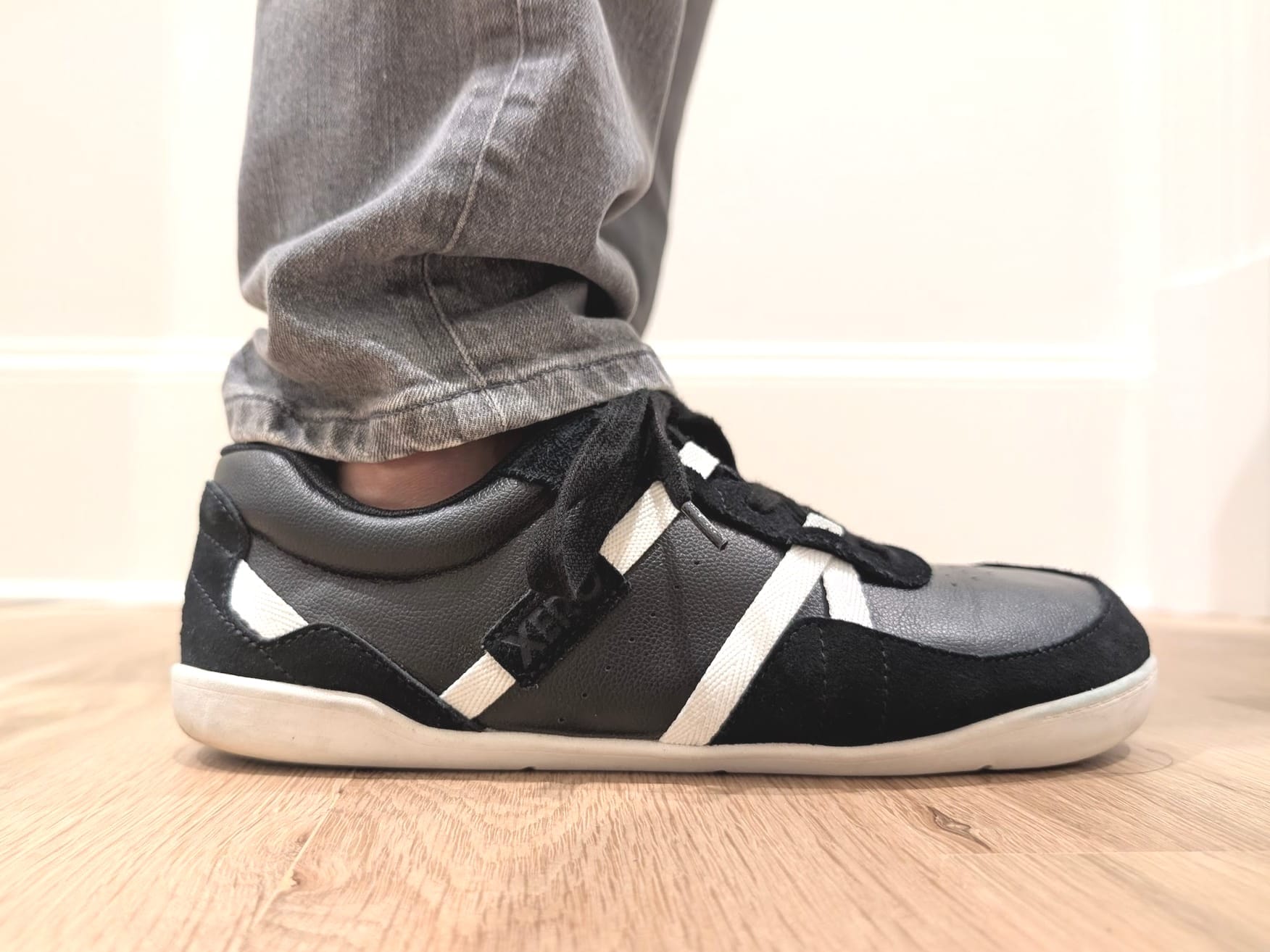Saucony Kinvara 2 Running Shoes Review
We understand that the Saucony Kinvara 2™ has been out for quite a while and as of this writing the Kinvara 3™ has just recently hit the stores. Actually, due to the release of the Kinvara 3, you can pick up the Kinvara 2 on the cheap right now. So…

We understand that the Saucony Kinvara 2™ has been out for quite a while and as of this writing the Kinvara 3™ has just recently hit the stores. Actually, due to the release of the Kinvara 3, you can pick up the Kinvara 2 on the cheap right now.
So why a Kinvara 2 review if it's old news? For one, the Kinvara 2 has been a popular shoe for minimalist-minded runners ever since it's release (and not unlike the original Kinvara), so reviewing it is a way to make sure BirthdayShoes readers are kept in the know of what's hot (or not).
Two, as this will be the first Kinvara review for BirthdayShoes, it serves the (future) purpose of comparing the Kinvara 2 to the Kinvara 3 as well as possible future shoes in the same line. Plus I’d just happened to be using the Kinvara 2 quite a bit over the past several weeks.
So allow me to jump right in ... after the jump!
Overview
Some of the pros of this shoe to me were:
- Low heel-to-toe drop: 4mm
- Lightweight: 7.3oz (M9)
- Low stack height: Heel (23mm), Forefoot (19mm)
- Secure fit in the heel
- Works with either my Montrail Enduro Sole™ or SuperFeet Black™ insoles
- Sock fit was very soft and running sockless felt great
Some of the cons with this shoe:
- Toe box is too narrow if you use your normal running shoe size (wide is available or go half size up)
- Not sure the thin upper material will hold up to a lot of mileage and flexing
- Midsole is a bit stiff
Overall I’d give the Saucony Kinvara 2 high marks and definitely would be interested in owning another pair. Do to the lack of toe room in the pair I have I’d probably limit how far I’d run in them. However, I did manage to eke out a bit more toe room by running sockless so that is always an option. The 4mm drop seems about right; I could easily maintain my midfoot (or full foot) strike without any problems.
The Upper
The Saucony Kinvara 2 utilizes a fairly simple, sock fit style upper constructed with a mono-filament outer mesh and a plush sock liner on the inside of the upper. I found the sock liner to be extremely comfortable with or without socks.
The all mesh upper was extremely breathable, nice on the hot weather I’ve been running in lately here in the Deep South. However, I was a bit concerned that after heavy use this all mesh style of upper would begin to tear at the metatarsal flex point as has every shoe I’ve ever owned that was constructed similarly. The only way to mitigate this issue is to reinforce the mesh with a band of tougher material right where the upper joins the midsole.
The heel cup was very nice, soft and very securely held my heel in place even with using my typical orthotic insoles (Montrail Enduro Sole or SuperFeet Black).
Probably my biggest issue with this shoe was that the toe box is rather pointed and lacks adequate room for proper toe spread. For somebody interested in the Kinvara 2 I’d recommend going up half a size. I also know the Kinvara 2 is available in a wide so perhaps that’s another option. Because of the lack of toe room I’d be hesitant to go more than 15-20 miles at a time in them for fear of issues related to constraining proper toe spread (for me that means between the toe blisters, black toe nails, etc…). However, for everyday mileage this is a great shoe. I even found I could buy a little more toe room by simply running sockless (something I’ve rarely done outside of wearing Vibram Five Fingers).
The Midsole
I found the midsole to be very nice and firm; comparable to the Altra Provision I recently reviewed but perhaps a touch cushier. The 4mm heel-to-toe drop feels very right for this shoe as I was able to easily maintain a full-midfoot strike.
My only complaint with the midsole is that I wish it were a bit more flexible. While the midsole is not crazy stiff I think it would make for a softer foot strike transition and more dynamically responsive shoe if it were more flexible.
The Outsole
I felt the tread of this shoe was pretty good overall; no traction issues on any the surfaces I tested on; gravel, asphalt, concrete and some light trail use. In fact I’d almost consider this to be a hybrid road-trail shoe as the tread is likely aggressive enough for just about any dry trail and certainly for any gravel or 4x4 roads you’d encounter. However, I wouldn’t recommend running on more technical or wet and muddy trails.
My only concerns with the outsole are how long it will hold up to wear. I still wonder why the most high abrasion rubber re-enforcement is only in the heel and extreme front end of the toe areas when this shoe is clearly designed for mid-foot striking? While there are other rubber sections in the mid-fore foot area this material seems lighter and less abrasion resistant than the other areas I described (heel and extreme front end). I think a better design choice would be to use more of the high friction rubber along the typical mid-fore foot strike pattern wear areas. On the other hand, from what I’ve been reading, it seems like most folks are getting typical shoe mileages out of the Kinvara 2 so perhaps this is a non-issue?
Function
As of this review I have tested the Saucony Kinvara 2 by running over 60 miles on mostly paved and gravel roads and paths with some dry single track trail. My longest run was 14 miles that was mostly a mix of hilly gravel roads and flat asphalt bike path.
On all of these surfaces this shoe performed as designed and functioned well. I felt this shoe had plenty of traction everywhere I used it. While I was initially concerned about the lack of high friction rubber in the outsole where the main foot strike areas are after 60 miles I could hardly notice any significant wear.
The overall cushioning felt great and was just enough to protect my feet from the large gravel chunks I frequently ran over; however the midsole could be a bit more flexible.
The upper was extremely breathable and a real treat running in the hot and humid afternoons around here. Not sure about the overall durability of an all mesh upper but over the mileage I ran I could detect no significant wear. The biggest issue was the tight and pointy toe box. Felt very cramped with orthotic use coupled with wearing medium thickness running socks. Was endurable when I ran sockless and with my more minimal orthotic insole.
Really like this shoe for typical week day training run mileage on asphalt to easier non-technical trails.
Conclusion
I really like this shoe and would definitely recommend it to others and would buy another pair myself. However the shoe could be tweaked and I’m anxious to try the Kinvara 3 to see if any of my recommendations have been addressed that are namely:
- Toe box needs to be less pointed and have a bit more room; anatomical shaping would be highly preferential.
- Midsole could stand to be a bit more flexible, perhaps by reducing the overall stack height a touch could accomplish this.
- Outsole needs to use more of the high friction rubber in the predicted mid-fore foot strike areas; would most likely significantly increase the life of the shoe.




